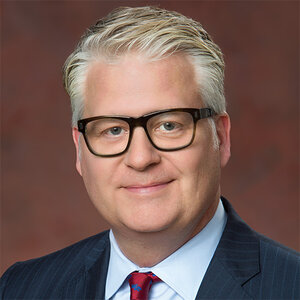Needy or worthy? Transitioning from transactional to transformational fundraising

While today’s modern healthcare organizations can be vastly different in size, specialties, and patient populations, they likely share similar beginnings rooted in transactional philanthropy. Under this model, hospitals rely on donors to provide the initial capital required to construct buildings and infrastructure. Later, donors are tapped to fund everything from lobby furniture and parking lots to the latest medical technology. Rady Children’s Hospital San Diego, for example, relied on money raised by the Kiwanis and women’s auxiliary in 1952 to construct a polio hospital, and then, as the campus grew, sought support from donors to build new patient care structures.
While there are positives to this fundraising approach, it is ultimately a shallow way to connect people to an organization.
Yes, you can raise a lot of money this way. Many small gifts made by donors, often using their current assets or payroll deductions, can collectively add up to significant sums. Some donors of limited means prefer making transactional gifts, and that’s okay; we’re happy to provide them with an avenue to contribute $25 a month. These are important gifts that can help sustain an organization. But they can also short-circuit future engagement.
Ultimately, philanthropy is about generous and thoughtful individuals who want to support people and organizations doing great things. When we take impact into consideration, a one-time transactional gift is simply short-sighted. The potential of visionary donors can only be fully realized through long-term and deep relationships.
Making fundraising transformational
The approach we favor at Rady Children’s Hospital Foundation is based on the notion that donors like to solve problems. They want to invest in initiatives that make an impact. Donors who have a child with a specific diagnosis, for example, are often particularly interested in supporting research and innovation in that space. With transformational or innovation-based fundraising, we’re asking donors to support an idea rather than purchase an item.
Fundamentally, organizations must ask themselves, are we a needy organization or a worthy one? A needy organization might ask a donor to choose from a list of items they can buy to support continued operations. A worthy organization invites donors to join the effort to find answers to big questions and solve big problems. Even small, single-issue nonprofits can talk about themselves in a transformational way. It’s the difference between saying, “We need $25 to pay the electric bill” and “We need $25 to help transform lives.”
While there is no guarantee that a donor’s investment will result in a medical breakthrough, there are people who understand that, just like in their business lives, there is value in asking the big questions and in taking risks. If you can find such supporters, your organization will continue to generate innovative, visionary, and bold ideas over the long term.
If recent history is any indication, big ideas and innovation can have a big payoff. Sequencing the first human genome cost about $1 billion and took 13 years to complete. Now, we can accomplish the same feat in 13 hours for around $8,000. Similar quantum leaps are occurring across health care, technology, biotech, and life sciences. When you consider the evolution of health care, we’re at a point where healthcare organizations think of themselves not as a place where doctors and nurses are reactive, responding to whatever illness or injury is in front of them, but where the conversation is almost exclusively about preventative medicine and keeping people out of the hospital.
The evolving donor
Donors have also changed. When I first started fundraising, decades ago at the United Way, people would give us money, trust that we were doing good work and stewarding their funds appropriately, and go on their merry way. Today’s donors are more sophisticated, often requiring recipient organizations to show them ROIs and metrics showing whether their investment has been successful. They are more in control, deciding where they want to give and what they’re excited about supporting.
For example, to secure a couple of recent gifts to Rady Children’s, we submitted a business plan instead of a proposal, because that is what the donor asked for. We do need to be wary, though, of going too far in that direction. While it’s important to have business-like rigor, we need to acknowledge that a philanthropic gift is not a sale or a financial transaction.
Shifting focus
At our foundation, we have found success focusing our time, attention, and resources primarily on transformational gifts of $10 million or more. There is an art to procuring these large gifts, and one of the biggest challenges is training staff who may be more accustomed to transactional fundraising. This new breed of gift officer needs to be entrepreneurial, proactively looking for exciting and innovative ideas within their organization that a philanthropic program can be built around, and then lobbying their leadership for support. Successful fundraisers invest time with donors to understand what motivates them, gradually moving them along the continuum from knowing nothing about an organization to the point where, instead of saying, “You should be doing this,” they say, “We should be doing this.”
The fundamental difference between transactional and innovation-based fundraising comes down to the donor’s personal connection to an organization. Take technology, for example. Many of us are naturally drawn to shiny new innovations and might consider making a one-time transaction to purchase the technology. In innovation-based fundraising, though, technology for the sake of technology isn’t enough. To be transformational, technology must shift something or change something or create a better way to take care of families. In the end, donors aren’t giving because they think it’s cool to watch a 3D printer build a model of a human heart. They’re doing it because they realize the awesome potential they have to make a lasting impact.
Stephen Jennings is senior vice president and chief external affairs officer of Rady Children’s Hospital-San Diego and executive director of Rady Children’s Hospital Foundation.





